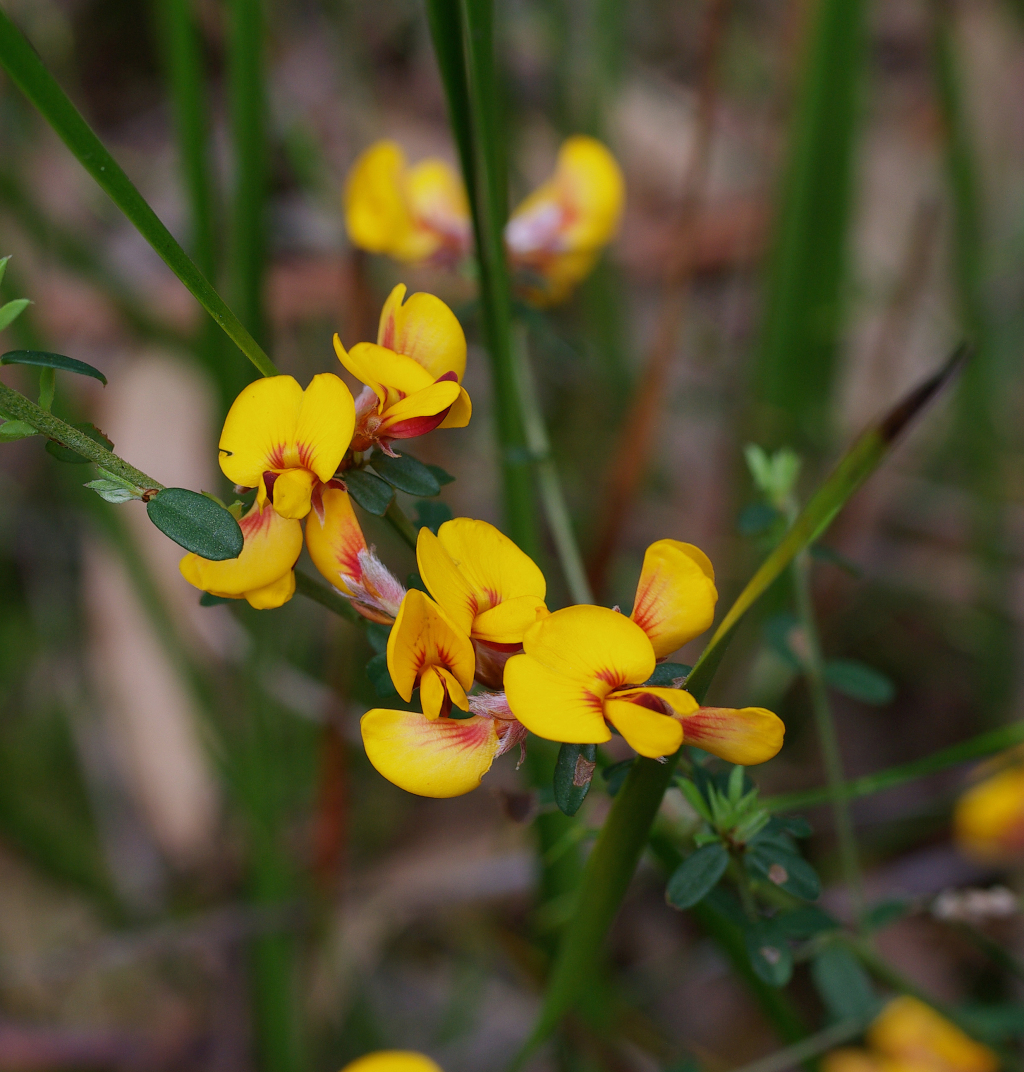Pultenaea stricta
Sims Rigid Bush-peaSlender, usually erect shrub to 1 m high; stems faintly ridged and with fine, closely appressed hairs. Leaves elliptic to obovate, 5–10 mm long, 2–4.5 mm wide, flat; apex obtuse with a short recurved mucro; margin slightly recurved; both surfaces glabrous; midrib depressed above, prominently raised below; stipules lanceolate, c. 1 mm long, dark brown. Inflorescence terminal, head-like, of more than 3 flowers; bracts ovate, 2–4 mm long, deciduous at anthesis, base slightly hairy, apex often torn; enlarged stipules persistent at base of pedicels; calyx 4–5 mm long, densely covered with pale, silky hairs; bracteoles attached to upper half of calyx tube, lanceolate, 3–4 mm long, base hairy; standard 7–9 mm wide; ovary hairy. Pod flat. Flowers Sep.–Nov.
Wim, GleP, Brid, VVP, VRiv, GipP, OtP, WaP, CVU, GGr, DunT, NIS, EGU, WPro, HSF, OtR, Strz. Also SA, NSW, Tas. Widespread in moist forest and heathland south of the Great Dividing Range, usually in wet areas.
The presence of brown, papery bracts is an important feature distinguishing P. stricta from P. gunnii with which it is sometimes confused. Pultenaea stricta also requires a much wetter habitat and is often found along drainage lines and on margins of swamps and streams.
Corrick, M.G. (1996). Pultenaea. In: Walsh, N.G.; Entwisle, T.J., Flora of Victoria Vol. 3, Dicotyledons Winteraceae to Myrtaceae, pp. 765–793. Inkata Press, Melbourne.
 Spinning
Spinning
